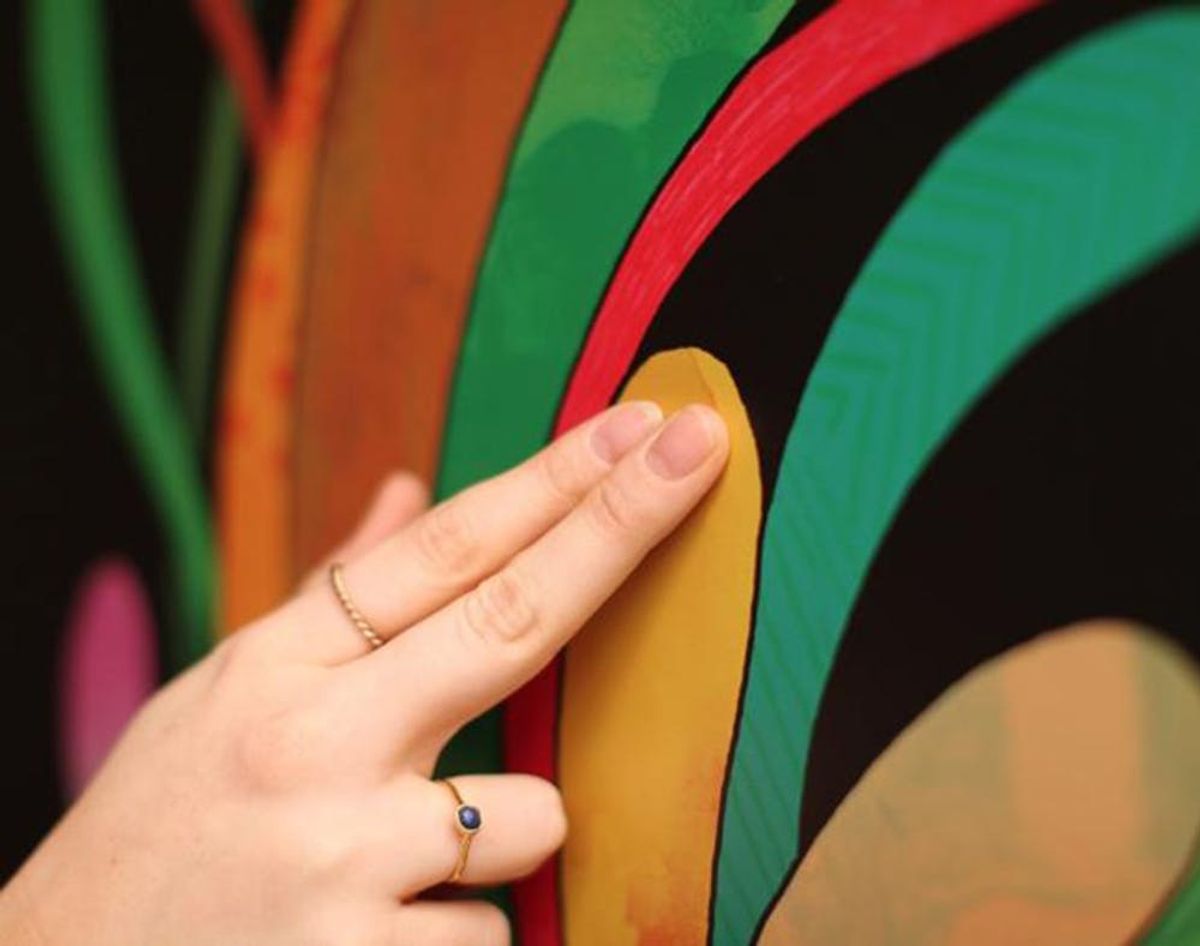Here’s Why Conductive Ink is Going to Change Your World (and Your Home!)

“We’ve basically created an app that’s made out of paper.” Whoa. This might be a “one small step for ink technologists, one giant leap for mankind” kind of moment, and it’s all thanks to the creation of conductive ink.
Developed by printed electronics firm Novalia, conductive ink is a prototype technology that integrates the touch-sensitive nature of smartphone and tablet screens into basic paper to transform your average 8 1/2 x 11-inch sheet into a fully interactive interface. While Novalia has been developing the potential uses for this magical product (thanks, electrons!) for a number of years, including a paper drum kit, the ink made its commercial debut in UK spice brand Scwartz’s Sound of Taste campaign. There, it transforms an abstract drawing of cooking spices into a responsive sonic landscape. Duuuude.
The “sonic poster” — designed by conceptual illustrator Billie Jean and creative agency Grey London — articulates how taste and flavor might hear and feel (on your fingers, not in your mouth). The resulting poster-sized visual depicts 16 different spices and herbs as different swaying plumes that are each paired with a musical chord that plays through your smartphone via Bluetooth when it’s touched.
Tap “cumin” and E flat major sounds. Press “fennel” to summon F minor, or brush your fingers against all of the poster’s technicolor lashes to conduct a symphony of bright piano chords. Sonic poster, I totally get you now!
Besides being EXTREMELY far out, this psychedelic poster beautifully displays how print — the medium often derided as “dead” — is actually more alive than we’ve ever imagined it to be. Novalia founder and scientist Dr Kate Stone described past experiments where conductive ink-printed newspapers read YOU the stories as well as “broadcasted” important press conferences and editorial commentary through wireless headphones while you flipped through its pages. The ink also allowed users to vote on hot topics and Like articles on Facebook. We think this type of integration could definitely be the savior for certain wavering publications, and even resurrect a few that went out of print way too soon.
This technology could seriously be THE game changer for bridging a gap between the analog and digital worlds, especially for those craving the intimacy lost by virtual automation. Imagine if books, maps and product packaging were all amped up digitally by this “smart” ink: Physical things would once again have our utmost attention. It just might be the hack that saves us all from the nagging lure of mobile screens.
(h/t Fastco Design, Novalia)
What uses would you have for conductive ink? What are your thoughts on this developing technology? Tell us in the comments below.

















